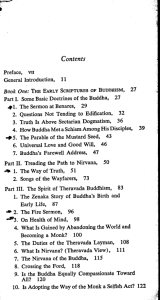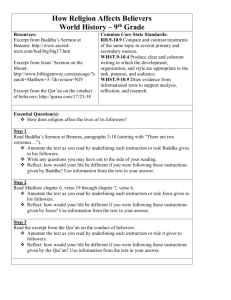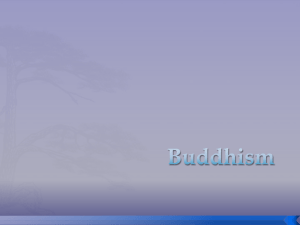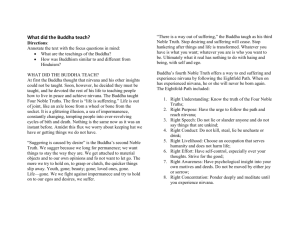Buddha's Truth Student Worksheet
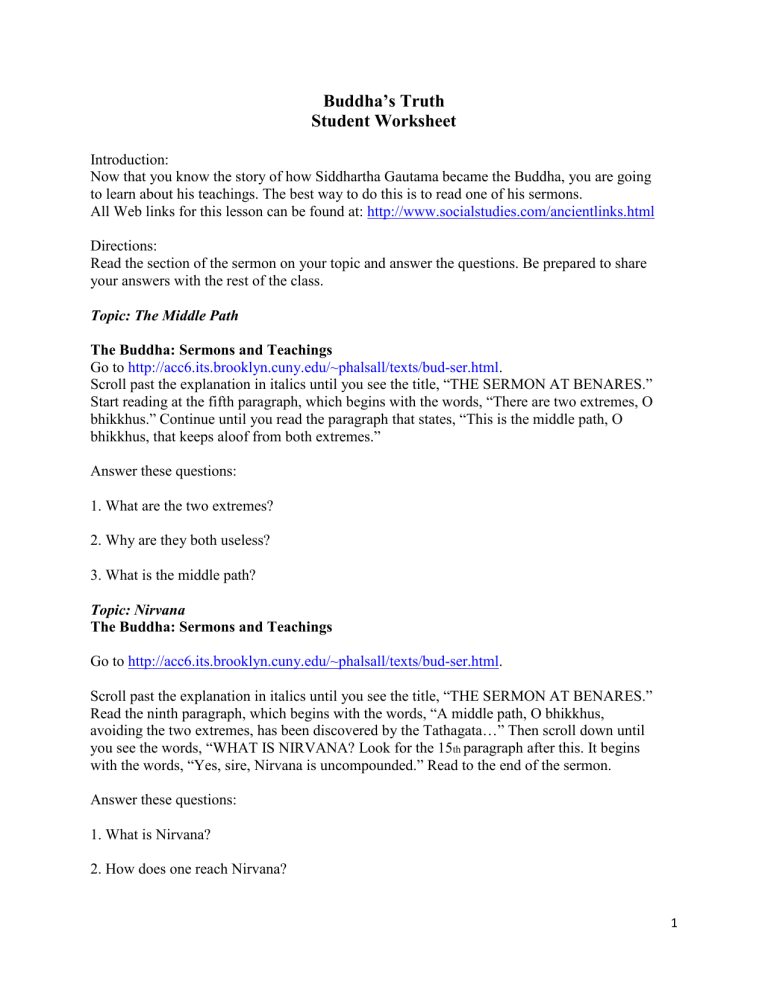
Buddha’s Truth
Student Worksheet
Introduction:
Now that you know the story of how Siddhartha Gautama became the Buddha, you are going to learn about his teachings. The best way to do this is to read one of his sermons.
All Web links for this lesson can be found at: http://www.socialstudies.com/ancientlinks.html
Directions:
Read the section of the sermon on your topic and answer the questions. Be prepared to share your answers with the rest of the class.
Topic: The Middle Path
The Buddha: Sermons and Teachings
Go to http://acc6.its.brooklyn.cuny.edu/~phalsall/texts/bud-ser.html
.
Scroll past the explanation in italics until you see the title, “THE SERMON AT BENARES.”
Start reading at the fifth paragraph, which begins with the words, “There are two extremes, O bhikkhus.” Continue until you read the paragraph that states, “This is the middle path, O bhikkhus, that keeps aloof from both extremes.”
Answer these questions:
1. What are the two extremes?
2. Why are they both useless?
3. What is the middle path?
Topic: Nirvana
The Buddha: Sermons and Teachings
Go to http://acc6.its.brooklyn.cuny.edu/~phalsall/texts/bud-ser.html
.
Scroll past the explanation in italics until you see the title, “THE SERMON AT BENARES.”
Read the ninth paragraph, which begins with the words, “A middle path, O bhikkhus, avoiding the two extremes, has been discovered by the Tathagata…” Then scroll down until you see the words, “WHAT IS NIRVANA? Look for the 15 th paragraph after this. It begins with the words, “Yes, sire, Nirvana is uncompounded.” Read to the end of the sermon.
Answer these questions:
1. What is Nirvana?
2. How does one reach Nirvana?
1
3. What example does the Buddha use to prove that Nirvana exists?
Topic: The Four Noble Truths
The Buddha: Sermons and Teachings
Go to http://acc6.its.brooklyn.cuny.edu/~phalsall/texts/bud-ser.html
.
Scroll about halfway down to the paragraph that begins with the words, “He who recognizes the existence of suffering,” and continue reading up to and including the paragraph that says, “Right views; right aspirations; right speech; right behavior; right livelihood, right effort; right thoughts; and right contemplation.”
Answer these questions:
1. What is the first noble truth?
2. What is the second noble truth?
3. What is the third noble truth?
4. What is the fourth noble truth?
5. What is the eightfold path?
2


